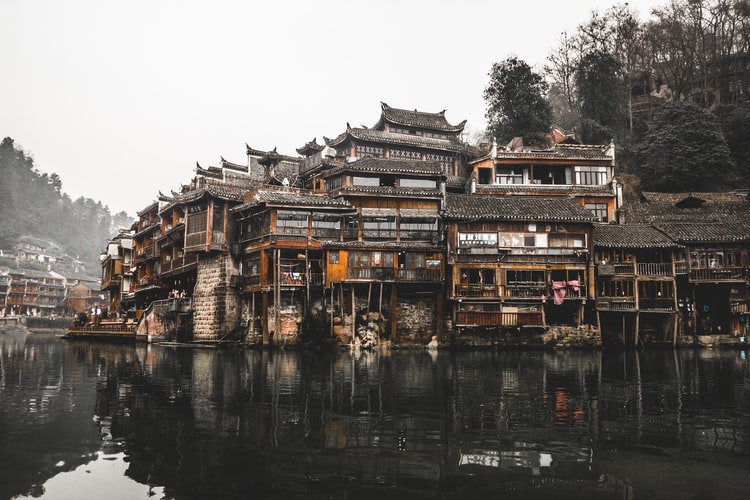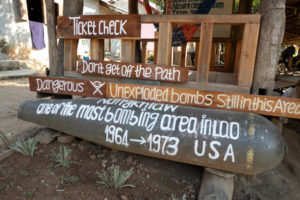
Image Credit: Theodor Lundqvist/Unsplash
Trigger Warnings : Violence and War Crimes
Lhasa, Tibet – The face-off between India and China over the Tibetan border dates back to 1949. The Current Affairs Times has covered this story in two parts. The first part explores the history of these conflicts.
The Friction Between India and China
The disagreement between India and China centers around the exact location of the border between the two superpower nations. India was a British colony in 1914 when it signed a treaty with Tibet establishing the McMahon Line along the border. This line extends 550 miles through the Himalayas.
India obtained its independence in 1947. In 1949, Chinese revolutionary, Mao Zedong, ended his nation’s communist revolution with the formation of The People’s Republic of China. That year, the Indo-China border dispute began. In the 1950s, China continued to claim that Tibet was not independent and could not have signed a treaty creating an international border. All negotiation attempts failed at that time.
China started exercising control over critical roadblocks around the western frontier. Meanwhile, India and its allies saw all incursions from China as a Maoist plot to spread communism in the region.
In 1962, Chinese military troops crossed the McMahon Line and moved deep inside the Indian territory. This resulted in a bloody month-long war with over 2000 people killed and 3000 imprisoned. China then re-drew the borderline, unofficially calling it the Line of Actual Control. To this day, India has maintained that the McMahon Line is the official border between India and China but China has never accepted this.
In 1967 the two countries were again at loggerheads, with a severe military scuffle alongside the mountain passes of Nathu La and Cho La, which then connected the Kingdom of Sikkim, a protectorate of India with Tibet.
At the same time, Tibet was China’s autonomous region. The question here was whether or not Tibet, as a self-rule state, had the right to claim ownership of the borderlines. Under applicable international norms, it did — but China, under Chairman Mao’s communist rule, decided not to follow that norm.
The 1967 scuffle was, however, the last time any troops would be killed on either side of the border — that is, until most recently in 2020 at the Galwan Valley Region of the border.
Non-Military Clashes Between India and China
After the 1967 fighting wound down, the nonmilitary political clashes started up between India and China. In 1987, while India was conducting a training operation, Chinese commanders, surprised at the large number of troops next to Chinese outposts, responded by marching towards the alleged Line of Actual Control. The Indian and Chinese governments blamed each other for amassing troops.
China, in the past few decades, has been building roads and dams in many countries. Dr. Anuradha Aggarwal, an expert on the Indo-China dispute calls this “a territorial conquest tactic of China.” According to Dr. Aggarwal, China is using trade treaties to its advantage and expanding its self-proclaimed territory.
In 2017, China involved the Himalayan country of Bhutan, an ally of India, by building a road in the Doklam Plateau — an area of the Himalayas controlled by Bhutan. India has always viewed this plateau as a buffer zone close to other disputed regions.
The Plight of Tibet’s Dispute With China
Tibet was the protectorate of the Qing Dynasty until 1912 when China replaced this dynasty. In 1912, under a treaty between China and Tibet, Tibet was to have an autonomous status. According to Dr. Anuradha Aggarwal, during this time China introduced Buddhism in Tibet. The Dalai Lama was the most powerful religious figure as the head monk of Buddhism in this region.
The alleged destruction of Tibet started in 1951 when, under China’s conquest, Tibet lost its national and cultural identity. The Tibetan people have called this “cultural genocide.” China and Tibet signed an agreement in 1951 under which, in exchange for Tibet coming into the fold of the Chinese government, China would not change Tibet’s social structure or interfere with the powers of the Dalai Lama. China failed to honor this agreement, triggering resistance in Tibet.
In 1959, Tibet erupted with a violent uprising protesting China’s attempt at domination. China today observes the anniversary of this uprising as “Self Emancipation Day.” This essentially means that China still claims moral and social authority over Tibet. Chinese narratives portray Tibet as a country of “feudal serfdom,’ described as “hell on earth” without Chinese governance.
The Nobel Peace Prize winner, the 14th Dalai Lama, tried to bring peace in 1965 when the Tibetan Autonomous Region (TAR) was established. This is the geographical part of Tibet that currently “belongs” to China. This is also the second-largest, densely-populated region of China.
China once again in 1994 failed to honor Tibet’s autonomy and withdrew what China considered to be its liberal measures in the country. The Chinese government established a new policy called “Grasping With Both Hands.” This policy reimposed all political repression in Tibet while maintaining its economic development under Chinese direction. The Tibetan people saw this as a method of undermining Tibetan Buddhism and culture. Once again, there were widespread protests.
As Tibet’s spiritual leader, His Holiness, the Dalai Lama, has at all times called for the establishment of his country as a peace zone. His goal is to achieve self-rule for Tibet through dialogue with China.
The military disputes on the Indo-China border resurfaced in 2020. The question to be answered is how to determine which nation actually owns this disputed territory?
Image Credit: Theodor Lundqvist/Unsplash
Sources:
- The Current Affairs Times exclusively interviewed Dr. Anuradha Aggarwal.
- The Current Affairs Times obtained original copies of the treaties between India and China. Original copies can be requested.
- “Himalayan pullback: The tense history of India-China border”
- “What Is The Conflict Between Tibet & China? Know About It”
- “India-China Border Dispute: A Conflict Explained”
Afia is a lawyer, journalist, an avid traveler, an avid reader, a foodie, and an amateur singer. She enjoys instrumental music with her glass of wine ?






